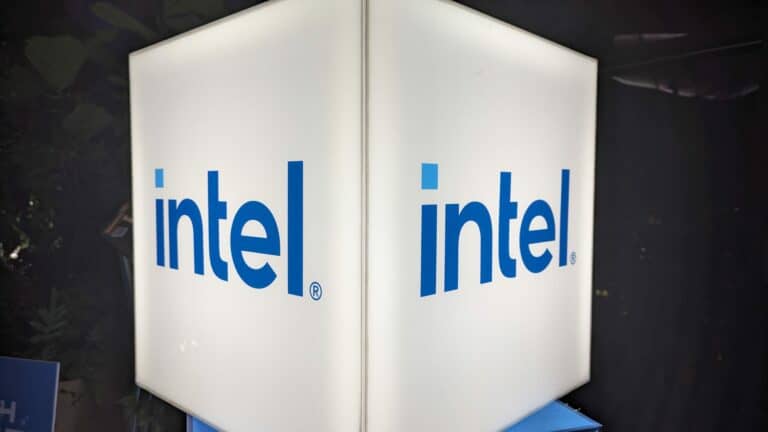US President Donald Trump appears to have changed his mind. Having called on Intel CEO Lip-Bu Tan to resign over his ties to China, Trump has now applauded his “amazing story”. Nevertheless, another exhilirating tale will need to unfold for Tan’s company to make it through its darkest days yet.
Change can happen on a dime. Last week, according to Trump, Lip-Bu Tan’s investments and relationships in China made the Intel CEO “strongly conflicted” with his role as leader of the American chip giant. The criticism seems to have subsided now that Tan, like Nvidia CEO Jensen Huang and AMD CEO Lisa Su, has visited the White House to become personally acquainted with the President.
The Chinese ties of Walden International, Tan’s investment company, are for others to dissect. However, we and most interested parties are primarily concerned with the state of affairs at Intel itself. The question remains unanswered as to whether the company is actually making progress under Tan.
Pruning yes, but what’s going to flourish?
It is clear that Lip-Bu Tan’s predecessors did not leave Intel in the best of shape. Years of stagnation in both client and server segments are still being punished severely by AMD, while Nvidia is running away with the AI spoils. Apple is no longer an Intel customer, the smartphone as a whole was fine without it, and the rest is history. But under Tan’s immediate predecessor, Pat Gelsinger, there was still a glimmer of hope for Intel to differentiate itself. This hope is being pruned away in order to one day, somewhere in the distant future, show figures that will impress Wall Street again.
To summarize the actions of Lip-Bu Tan’s pruning knife: it cut well initially, in our opinion. A perennial complaint about Intel revolved around a perceived overload of management layers. In April, Tan decided to flatten this structure and introduce more direct reporting lines. It sounded like a move in the style of Nvidia, where CEO Huang prefers hearing from technical teams directly. The Nvidia-esque move was followed by Tan’s requirement to work four days a week at the office, far from unusual in Silicon Valley.
However, the months of June to August were filled with huge cuts in the workforce and business divisions. Although the focus was originally on managers, the employees who were laid off turned out to be technical personnel as well. Without them, there are no new chip designs, and Intel is willing to let many of them go.
The death of IDM 2.0
That move is drastic enough, but things don’t stop at reduced headcount. Projects to build Intel’s future chip factories (worth billions upon billions) have been largely suspended. Only US construction plans remain intact, while the planned facilities in Magdeburg (Germany) and Wroclaw (Poland) will not go ahead.
If Intel fails to find a major customer for the upcoming 14A process, Lip-Bu Tan is not prepared to commit all that many resources for it. In other words, it’s make or break for Intel Foundry as a whole, because without leading chip processes, it cannot rival TSMC as intended. Instead, it would be relegated to a GlobalFoundries equivalent, once AMD’s chip manufacturing division but now mainly focused on everyday chips with lower margins than the latest AI, PC, and automotive processors. Meanwhile, AMD is a TSMC customer, and Intel has become one, too.
In any case, the canceled expansion of Intel Foundry is a fait accompli. Under former CEO Pat Gelsinger, the company sought to grow into a chip manufacturing giant once more. The strategy was called IDM 2.0 (Integrated Device Manufacturing 2.0). Although these plans did not necessarily progress at the desired pace, Intel made significant strides in catching up to the bleeding edge under Gelsinger. Between 2021 and 2024, “Chipzilla” managed to complete the intended five process nodes in four years (labelled somewhat unimaginatively as Five Nodes In Four Years, or 5N4Y). This brought it nearly back in line with TSMC’s capabilities.
However, the really big step was still a long way off. Due to lengthy construction processes, waiting times, and innovation phases, ASML’s brand-new High-NA EUV machines would herald Intel’s advance based on the latest, smallest, and fastest processes, but not for another few years. All those factories running at full steam? Think 2030s, not 2020s, for the real change ahead.
Under Tan, IDM 2.0 was predictably enough turned on its head. Could Gelsinger’s plan have worked? Absolutely. Could it have failed and cost a fortune anyway? Yes, it could have. IDM 2.0 rested on the support of both the US government and the European Union, both intent on bringing chip production back from Asia. Now that support has disappeared.
But so is Intel’s chance to differentiate itself. In the short term, it will become a slimmed-down but somewhat outdated chip manufacturer and designer. Nvidia has raced past it at F1 speed, AMD is more robust and already underwent a painful downsizing when it was on the precipice of bankruptcy ten years ago. What Intel has is a huge installed base. This seems to be its salvation for now, because existing customers in both the client and server sectors regularly choose the familiar path. But downsizing is not enough for Intel; it will also have to perform. That is far from a guarantee, and Tan is arguably just making it harder than ever for the chip industry’s most legendary firm.
Read also: Trump demands Intel CEO’s resignation over Chinese connections
